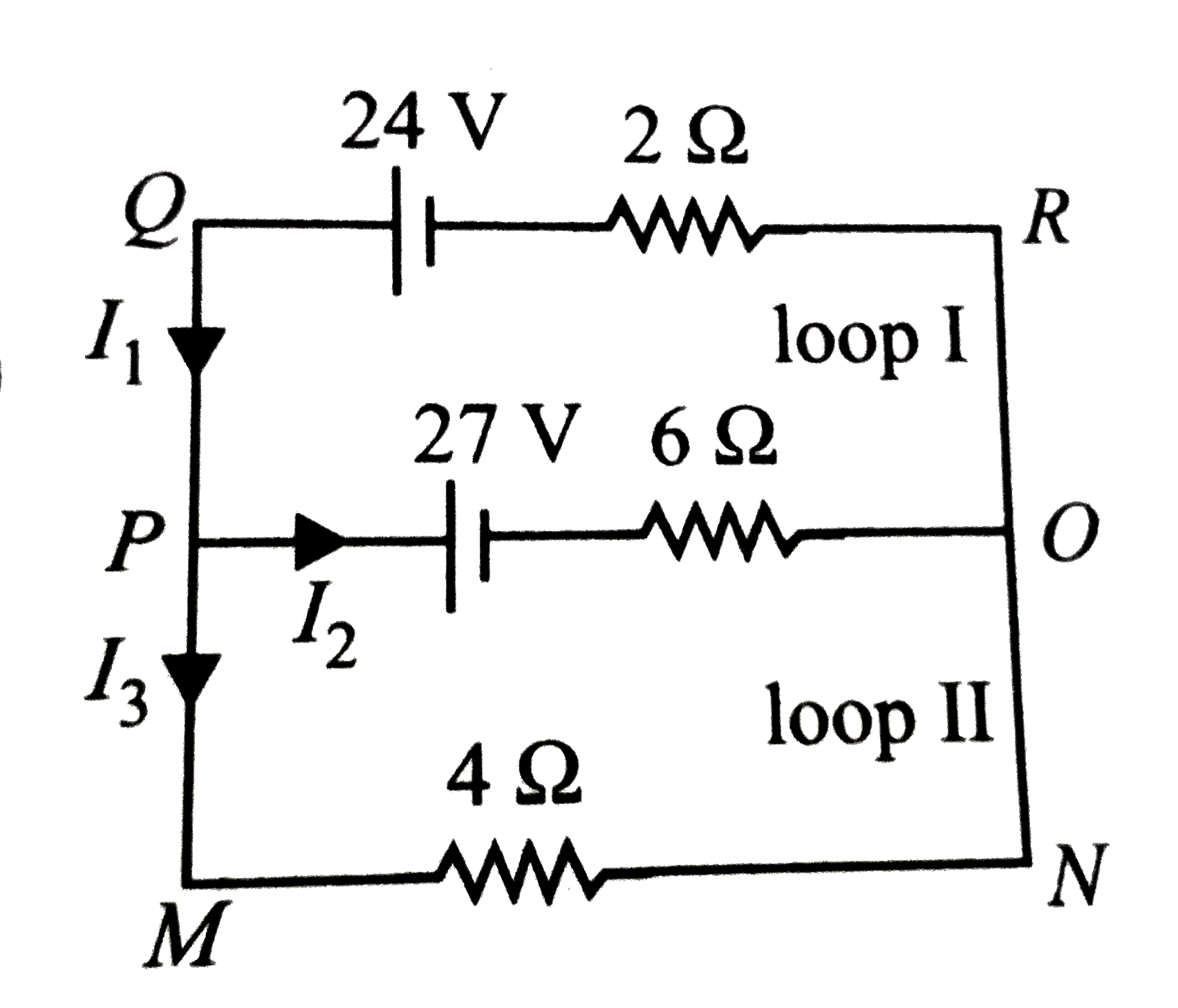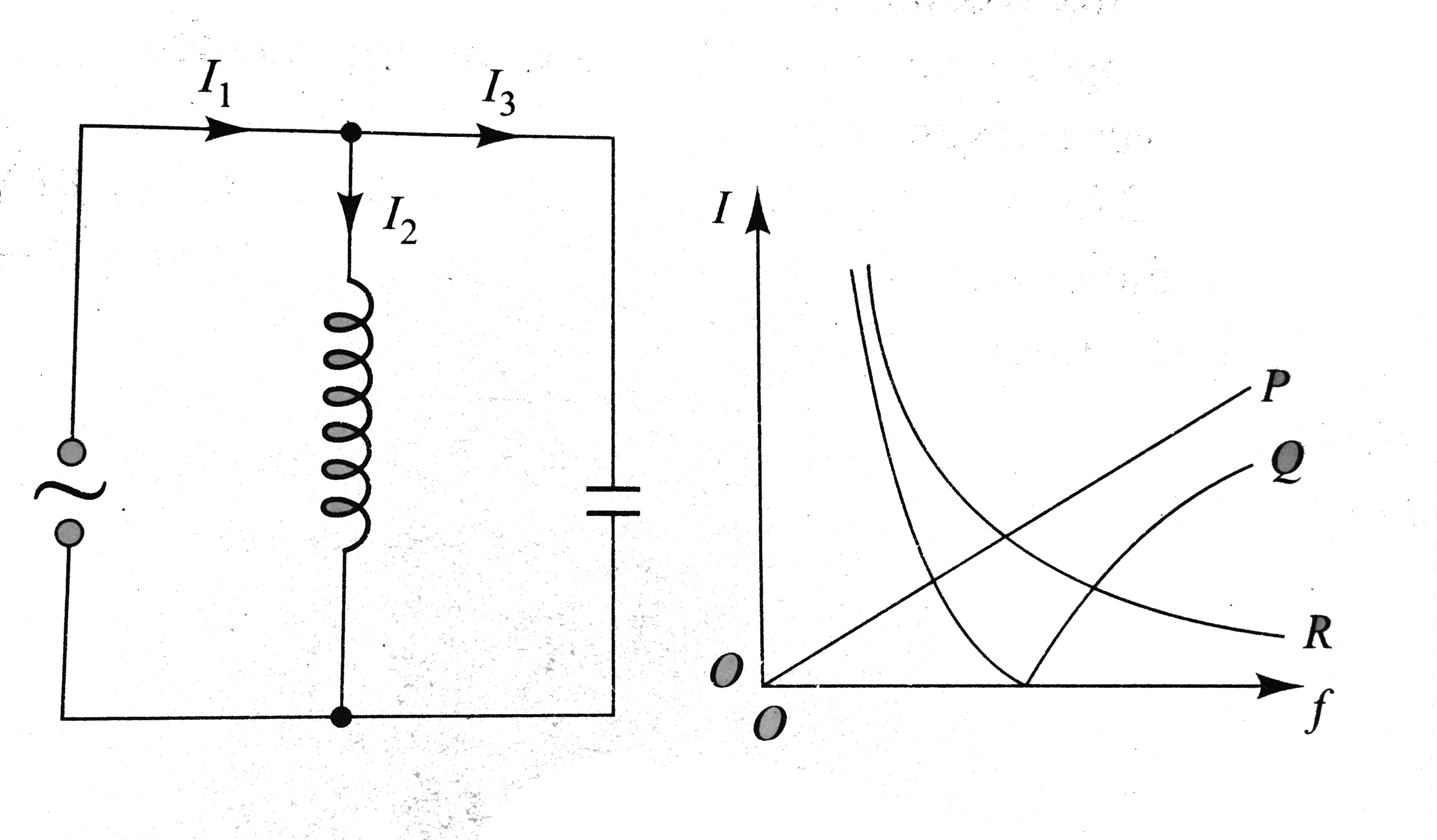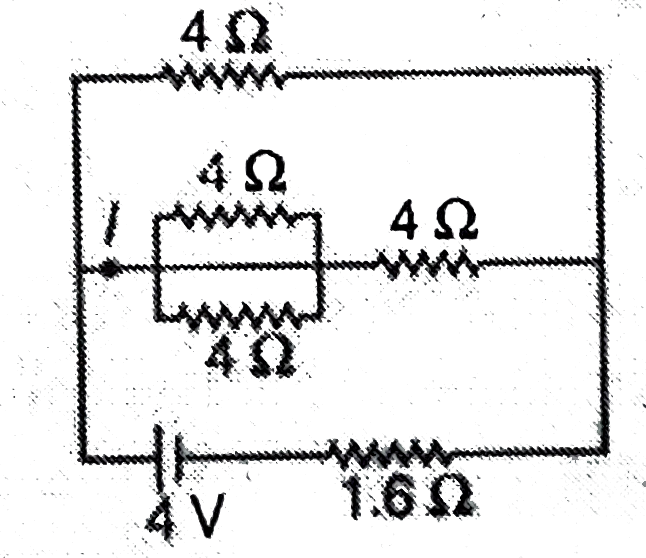In the circuit shown, the value of currents I1,I2andI3 are

A
3A,−3A2A,92A
B
92A,−32A
C
5A,4A,−3A
D
7A,54A,92A
Video Solution
Text Solution
The correct Answer is:A
Applying Kirchoff's voltage law,
In loopI,−27−6I2−2I1+24=0<br>
6I2+2I1=−3...(i)
In loopII,−27−6I2+4I3=0
6I2+4I1=−27...(ii)
At juction,P, I1−I2−I3=0…(iii)
Solving equations (i), (ii) and (iii) we get
I1=3A,I2=−3/2A,I3==9/2A

|
Topper's Solved these Questions
- CURRENT ELECTRICITYBook:NCERT FINGERTIPSChapter:CURRENT ELECTRICITYExercise:Wheatstone Bridge
Explore 6 Videos
- CURRENT ELECTRICITYBook:NCERT FINGERTIPSChapter:CURRENT ELECTRICITYExercise:Meter Bridge
Explore 4 Videos
- CURRENT ELECTRICITYBook:NCERT FINGERTIPSChapter:CURRENT ELECTRICITYExercise:Cell In Series And In Parallel
Explore 3 Videos
- COMMUNITCATION SYSTEMSBook:NCERT FINGERTIPSChapter:COMMUNITCATION SYSTEMSExercise:HOTS
Explore 10 Videos
- DUAL NATURE OF RADIATION AND MATTER Book:NCERT FINGERTIPSChapter:DUAL NATURE OF RADIATION AND MATTER Exercise:Assertion And Reason
Explore 15 Videos
Similar Questions
Knowledge Check
In the circuit shown if fig, the rims currents (I1),(I2) and(I3) are altered by varying the freqency f of the oscillator. The output voltage of the oscillatro remains sinusoidal and has a fixed amplitude.
When curves in figure correctly indicate the variation with frequency of the currents (I1),(I2),and(I3).
 A(A)(I1)=Q, (I2)=Q, (I3)=QB(B)(I1)=R, (I2)=Q, (I3)=QC(C) (I1)=Q, (I2)=P, (I3)=RD(D)(I1)=Q, (I2)=R, (I3)=P
A(A)(I1)=Q, (I2)=Q, (I3)=QB(B)(I1)=R, (I2)=Q, (I3)=QC(C) (I1)=Q, (I2)=P, (I3)=RD(D)(I1)=Q, (I2)=R, (I3)=PIn the circuit shown, the value of I in ampere is
 A1B0.60C0.4D1.5
A1B0.60C0.4D1.5In the circuit shown, the currents i1 and i2 are
 Ai1=1.5A,i2=0.5ABi1=0.5A,i2=1.5ACi1=1A.i2=3ADi1=3A,i2=1A
Ai1=1.5A,i2=0.5ABi1=0.5A,i2=1.5ACi1=1A.i2=3ADi1=3A,i2=1A
In the circuit shown the value of I in ampere is :

View SolutionIn the circuit shown in fig., the value of I1+I2 is

View SolutionIn the circuit shown in the figure. find I1andI2.

View SolutionIn the circuit shown in the figure
 .
.
The value of current I1 is
View SolutionIn the circuit shown in the figure
 .
.
The value of current I4 is
View Solution



